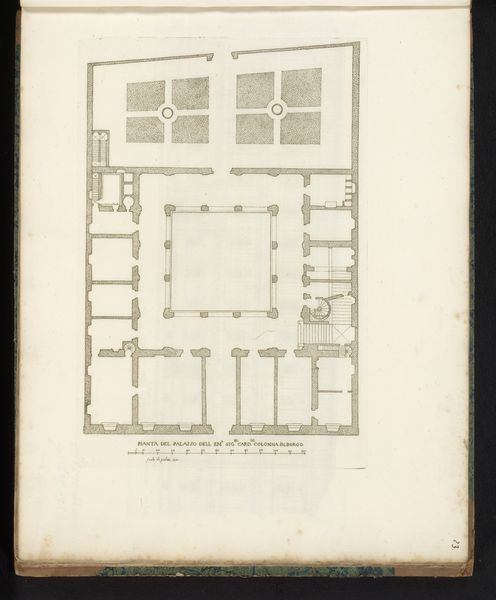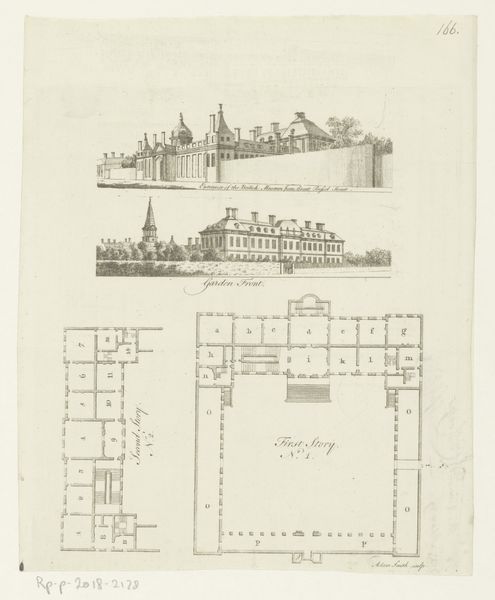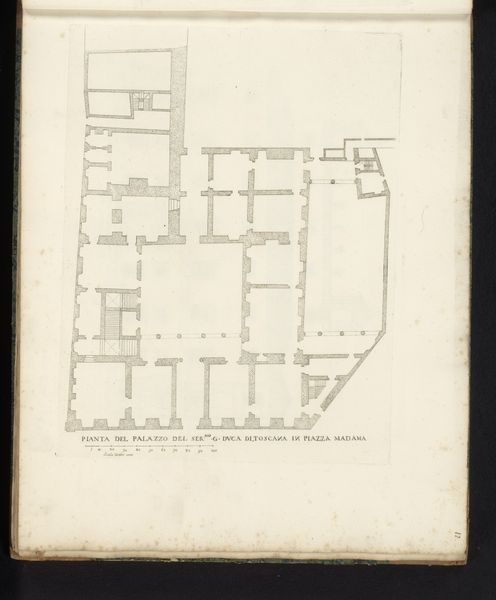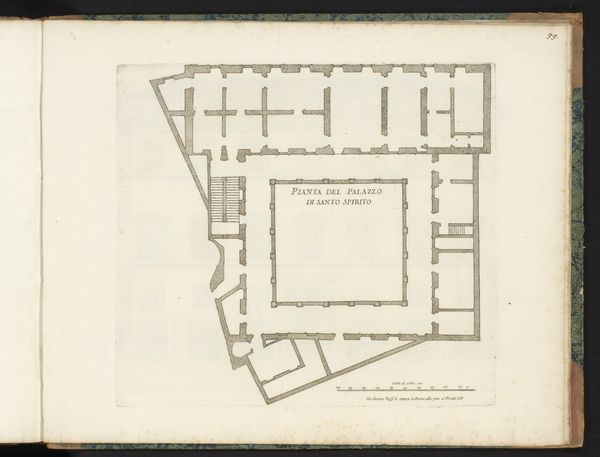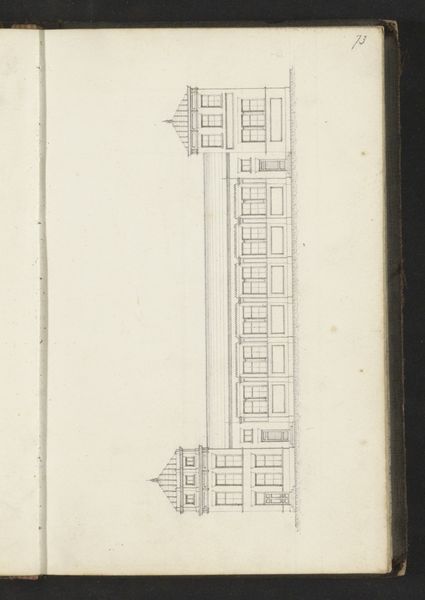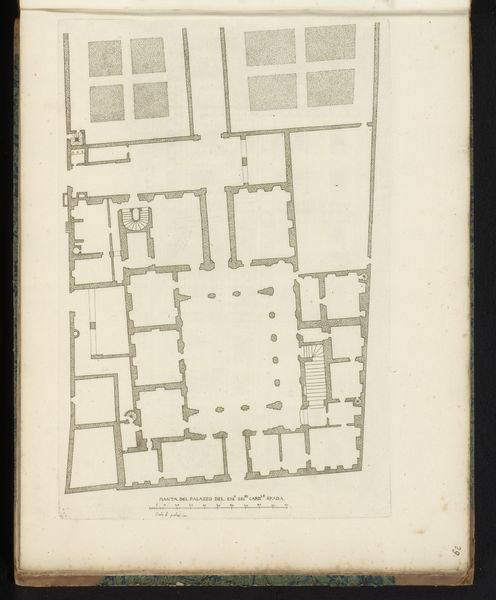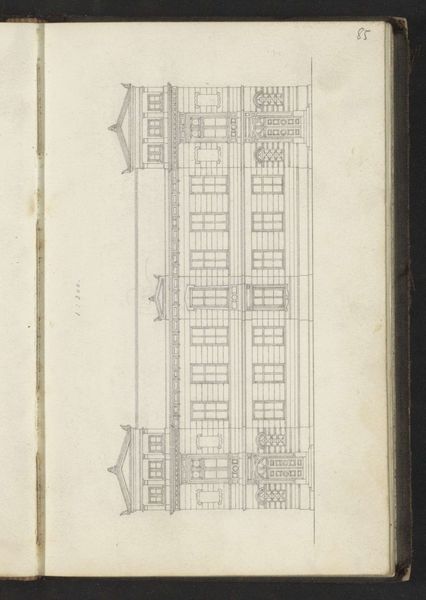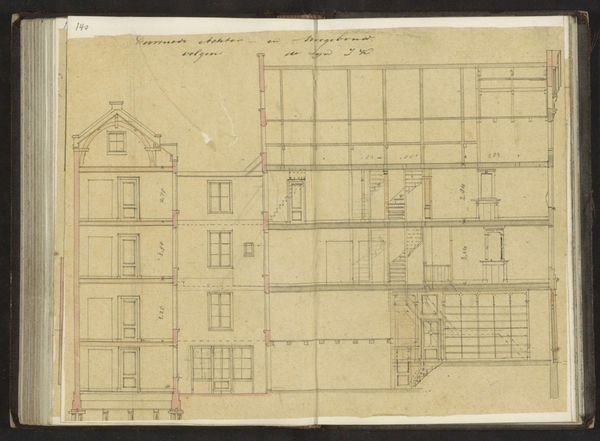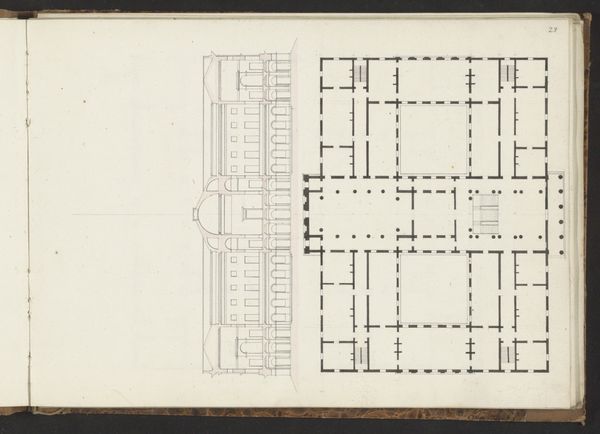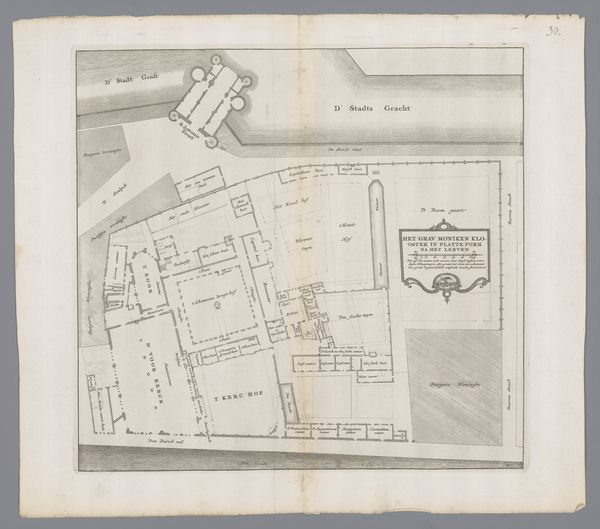
Plattegrond van en gezicht op het Nieuwezijds Huiszittenhuis te Amsterdam 1765
0:00
0:00
Dimensions: height 293 mm, width 208 mm
Copyright: Rijks Museum: Open Domain
Curator: This engraving from 1765 offers us a fascinating glimpse into the Nieuwezijds Huiszittenhuis in Amsterdam, a kind of almshouse. Editor: It's so meticulously rendered! At first glance, the severe geometry dominates. Two distinct parts form the composition, both equally rendered in terms of detail. Curator: Precisely. We see both a floor plan and a street view rendered in impressive detail. This institution, of course, represents more than just bricks and mortar. Editor: Absolutely. The plan itself almost resembles a codified grid, those long halls with labelled compartments. Is this order reassuring or oppressive, I wonder? Curator: An interesting question. Consider the inscription which notes its function: a Huiszitten-Aalmoezeniers Huis, essentially a charitable institution to aid the poor in their homes. Its architecture tells a parallel story. Editor: So the imposing façade speaks to its civic importance and philanthropy? The steep roofs and orderly rows of windows have a definite stately air. Is that classical symmetry attempting to counterbalance what might otherwise be a sombre feeling? Curator: In a way. Public welfare has long drawn on architectural language for symbolism: order, stability, generosity... The floorplan also reveals aspects of daily life; look at the long Gaanderij halls and placement of smaller rooms around the communal spaces, such as the 'Uitdeeling Plaats', suggesting organized benevolence. Editor: The spatial relations are fascinating. That distribution hall does seem to act as a crucial nexus for the building's function, with all paths seeming to eventually lead towards it. But thinking of distribution – it evokes ideas of systems. This architectural "language" you mention almost attempts to turn charitable actions into regulated procedures. Curator: Perhaps. But it speaks also of society attempting to care for its vulnerable, imbuing this building with potent, complex symbolism. Editor: Indeed. Seeing this architectural record provides such insight into not just building design, but social frameworks of 18th-century Amsterdam. Curator: Quite right, that careful detail opens up new historical understanding through what, at first appears to be a merely technical drawing.
Comments
No comments
Be the first to comment and join the conversation on the ultimate creative platform.
